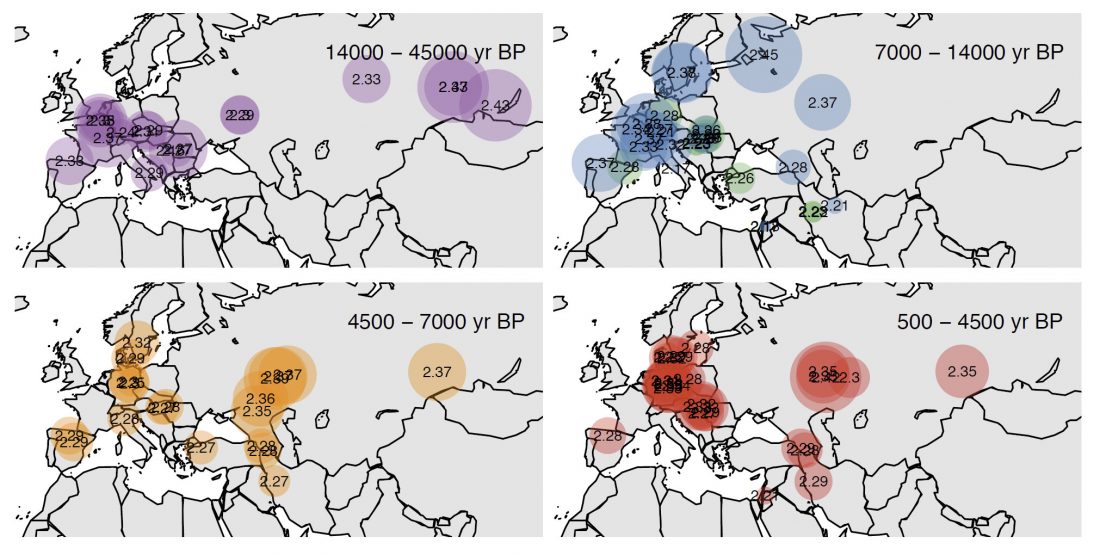Open article at Scientific Reports (Nature): Identification and analysis of mtDNA genomes attributed to Finns reveal long-stagnant demographic trends obscured in the total diversity, by Översti et al. (2017).
Of special interest is its depiction of Finland’s past as including the expansion of Corded Ware population of mtDNA U5b1b2 (and probably Y-DNA R1a-M417 subclades), most likely Uralic speakers of the Forest Zone, to the north of the Yamna culture (where Late Proto-Indo-European was spoken).
A later expansion of other subclades – particularly Y-DNA N1c -, was probably associated with the later western expansion of the Eurasian Seima-Turbino phenomenon… Read the rest “Another hint at the role of Corded Ware peoples in spreading Uralic languages into north-eastern Europe, found in mtDNA analysis of the Finnish population”

